Your space feels flat and poorly lit. Standard lighting is functional but fails to create any mood or visual interest, leaving your modern design looking uninspired.
COB (Chip on Board) LED downlights significantly enhance modern interiors by providing focused, high-quality light. They create dramatic accents, reduce glare, and offer superior color rendering. This targeted illumination makes spaces feel more sophisticated and visually dynamic by highlighting key features.
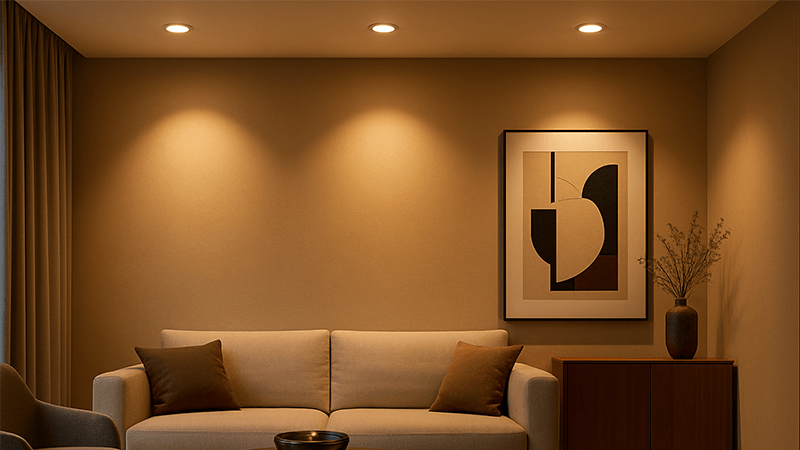
In my years of manufacturing LED lighting, I've seen how the right technology can completely transform a space. It’s not just about making a room bright; it's about shaping the experience within it. COB technology is a perfect example of this. But before you decide to invest in them for your project, you probably have some practical questions. Let's walk through the details I've learned from helping countless partners like you.
Are downlights still fashionable?
You're worried about your lighting choices looking dated. Trends change fast, and you don't want to specify a product that will soon be out of style.
Yes, downlights are very fashionable, especially minimalist and trimless designs1. They have evolved from simple utility lights into sophisticated tools for architectural lighting. They blend seamlessly into ceilings, offering a clean, modern aesthetic that designers and project managers love.
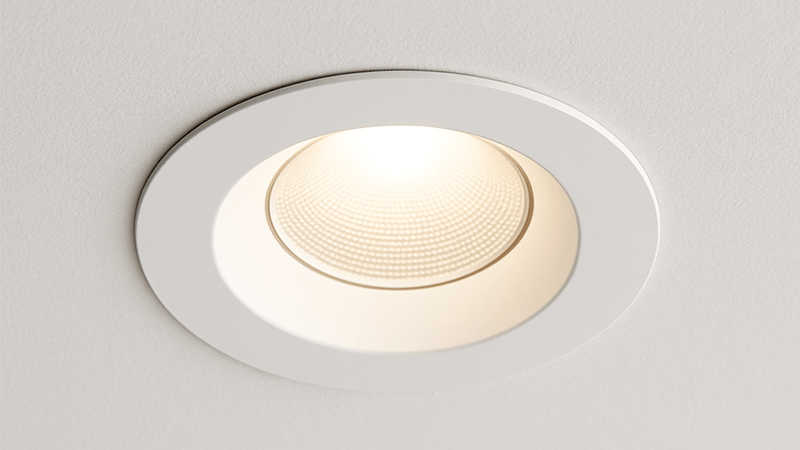
When I first started in this industry, downlights were often bulky cans with visible trims. They served a purpose, but they weren't exactly a designer's first choice for creating an elegant space. That has completely changed. Today's downlights, especially those using COB technology, are all about minimalism and performance. The goal is to see the light, not the fixture.
The Evolution of Downlights
The shift has been dramatic. Modern downlights are smaller, more efficient, and integrate perfectly into contemporary architecture. Trimless models, for instance, are plastered into the ceiling, creating a seamless, clean look where the light appears to emerge from the ceiling itself. This is a huge step up from the old recessed cans that cluttered the ceiling plane. I’ve personally supervised the production of thousands of these new-generation fixtures, and the demand from high-end residential and commercial projects is always growing. They want that clean, architectural look.
Why They Remain Popular
Here’s a simple breakdown of why they continue to be a go-to choice:
| Feature | Old Downlights | Modern COB Downlights |
|---|---|---|
| Appearance | Bulky, visible trim | Sleek, often trimless or with minimal trim |
| Integration | Interrupts ceiling plane | Blends seamlessly into the ceiling |
| Light Quality | Often wide, uncontrolled flood | Focused, high-quality accent or ambient light |
| Design Focus | Purely functional | Architectural and aesthetic |
| Flexibility | Fixed, single-purpose | Often adjustable (gimbal) and dimmable |
This focus on creating a clean ceiling line while providing high-quality, controllable light is why downlights are not just fashionable; they are a fundamental tool for good modern design.
How to make your LED lights look better?
Your current LED lighting looks harsh or boring. This creates an uninviting atmosphere and fails to showcase the design of the space. It's a common problem.
To make LED lights look better, focus on the quality of the beam. Use high CRI (Color Rendering Index) lights2, choose the right color temperature, and use dimmers3. Strategic placement and focused beams from COB downlights create depth and visual interest.
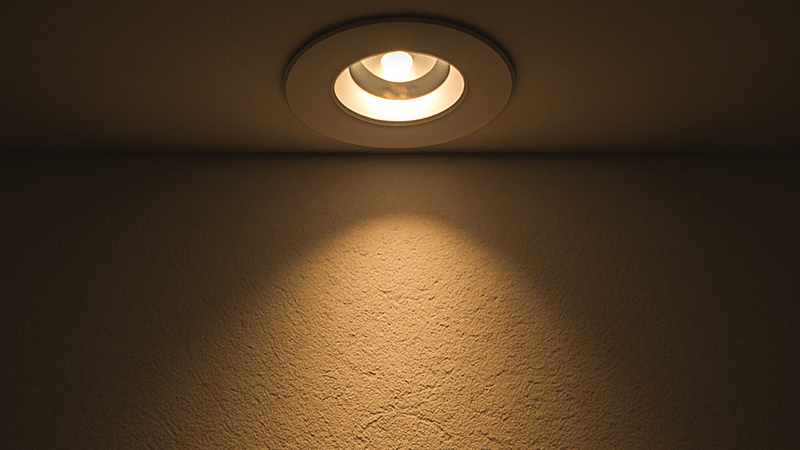
I remember a client who was developing a luxury apartment complex. They had an amazing interior design, but the initial lighting plan used cheap, wide-beam LEDs. Everything looked flat. We swapped them for high-CRI COB downlights with specific beam angle4s, and the result was night and day. The textures of the materials popped, and the spaces suddenly had life. The secret isn't just more light; it's better, more controlled light.
The Importance of Beam Angle
The single most important factor for accent lighting is the beam angle. If you want to highlight a piece of art, a plant, or an architectural feature, you need a focused beam. Based on my experience, a narrow beam angle of 10° to 15° is essential for creating a strong spotlight effect. If the beam is too wide, the light spills everywhere, and the center illuminance is too weak to create a dramatic focal point. The object you're trying to highlight just gets lost in a general wash of light. COB technology excels at producing these crisp, controlled beams.
Key Factors for Better Light Quality
Beyond the beam, consider these elements:
- Color Rendering Index (CRI)5: This measures how accurately a light source reveals the true colors of objects. A low CRI light makes everything look dull and washed out. For residential and commercial spaces where appearance matters, I always recommend a CRI of 90 or higher.
- Dimming: The ability to adjust brightness is crucial. It allows you to change the mood of a room from bright and functional to soft and intimate. Ensure your downlights are compatible with a good quality dimming system6 (like TRIAC or 0-10V).
- Strategic Placement: Don't just place lights in a grid. Think like a designer. Use light to create layers. Wall washing can make a room feel bigger, while accent lights can guide the eye and create points of interest.
Here is a quick guide to using beam angles effectively:
| Application | Recommended Beam Angle | Why? |
|---|---|---|
| Accent Lighting | 10° – 25° | Creates a high-contrast, dramatic focal point. |
| General Lighting | 35° – 60° | Provides broad, even illumination for a whole area. |
| Wall Washing | Asymmetric or 60°+ | Spreads light smoothly down a vertical surface. |
By controlling these factors, you move from simply lighting a space to designing with light.
What color downlights look best?
Choosing the wrong light color can completely ruin a room's atmosphere. It can make a cozy space feel cold and sterile, or a professional office feel dingy and yellow.
The "best" color depends on the room's function and desired mood. Warm White (2700K-3000K) is cozy for living areas. Natural White (4000K)7 is great for kitchens and offices. Cool White (5000K+)8 is best for task-heavy commercial areas.
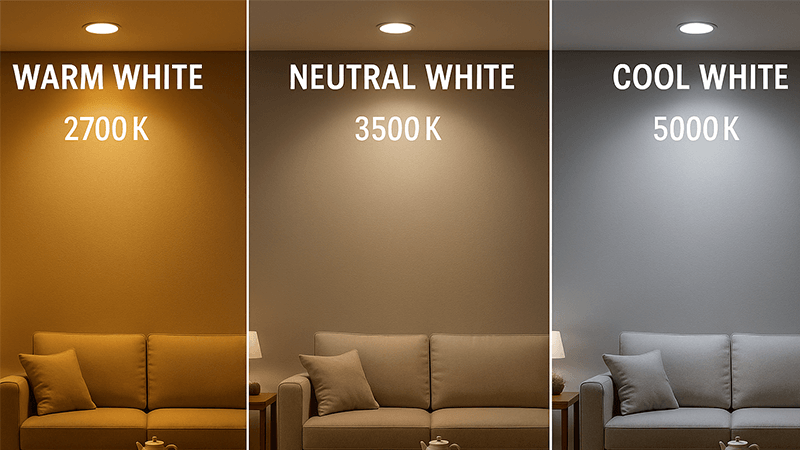
Choosing the right color temperature, or Correlated Color Temperature (CCT)9, is one of the most critical decisions in a lighting project. It directly impacts how people feel in a space. In our factory, we produce lights in a wide range of CCTs because I know our partners need specific options for different environments. There is no single "best" color; there is only the right color for the job.
Matching CCT to the Space
Think about the purpose of each room. Are you creating a place for relaxation or a place for focus? This will guide your CCT choice.
- 2700K (Warm White): This is the color of a traditional incandescent bulb. It's very warm and cozy. I recommend this for bedrooms, living rooms, and fine dining restaurants to create a relaxing and intimate atmosphere.
- 3000K (Soft White): Still warm and inviting, but a bit crisper than 2700K. This is my most requested CCT for general residential use. It's welcoming but clean enough for kitchens and bathrooms.
- 4000K (Natural/Neutral White): This is a balanced, neutral white light that mimics natural daylight. It promotes alertness and focus without being harsh. It’s perfect for offices, commercial retail spaces, and modern kitchens where you want colors to look true and the energy to be high.
- 5000K+ (Cool White): This is a very bright, blue-toned white light. It's intense and best suited for industrial settings, hospitals, warehouses, or task areas where maximum visibility is the priority.
Don't Forget the Fixture Color
The color of the light is one part of the equation. The color of the downlight fixture itself is the other.
| Fixture Color | Design Effect |
|---|---|
| White | Blends seamlessly with most ceilings for a minimalist look. |
| Black | Creates a bold, modern contrast, often used to make a design statement. |
| Metallic (Silver, Gold) | Adds a touch of luxury and can be coordinated with other hardware. |
For our OEM/ODM partners, we often create custom fixture colors to match their project's specific palette. The right combination of light color and fixture color ensures the lighting fully supports the overall interior design.
How long do COB LEDs typically last?
You need reliable lighting for your project. Frequent replacements are costly, disruptive, and damage your reputation for quality. This is a major concern for any purchasing manager.
A high-quality COB LED downlight10 typically lasts from 30,000 to 50,000 hours or more. This impressive lifespan depends heavily on the quality of the LED chip, the driver, and especially the heat sink design11, which is critical for performance.
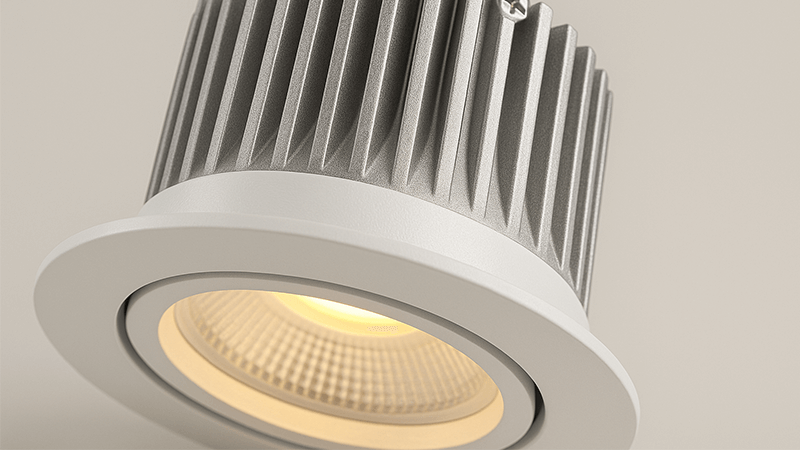
As a manufacturer, this is an area where I refuse to compromise. The difference between a lamp that fails in two years and one that lasts ten is almost always thermal management12. Heat is the enemy of LEDs. A COB chip generates a lot of heat in a very small area. If that heat isn't drawn away efficiently, the chip will degrade quickly, lose brightness, and fail prematurely.
The Role of Quality Components
Many factors contribute to a long lifespan, and it’s what separates a premium product from a cheap one.
- The Heat Sink: This is the most critical part. We use high-grade, die-cast aluminum for our heat sinks. The design of the fins is engineered to maximize surface area and allow for passive air cooling, which effectively dissipates heat away from the COB chip. Cheaper products often use thin, stamped aluminum or even plastic, which is a recipe for early failure.
- The LED Chip: We source our COB chips from reputable brands known for their efficiency and durability. A better chip not only produces better quality light but also runs more efficiently, generating less heat in the first place.
- The Driver: The LED driver is the power supply. A cheap, unstable driver can cause flickering and will fail long before the LED chip does. We pair our lights with reliable drivers that provide clean, consistent power, protecting the LED and ensuring a long, stable life.
Understanding Lifespan Ratings (L70)
When you see a lifespan rating like "50,000 hours," it’s usually an L70 rating. This doesn't mean the light will go dark at 50,000 hours. It means that at that point, it is projected to have degraded to 70% of its initial brightness. For most applications, this is still a very usable amount of light. A 50,000-hour L70 rating translates to over 11 years of use if the light is on for 12 hours a day. This is the kind of reliability that professionals need.
Conclusion
COB LED downlights are a stylish, high-quality, and durable solution for modern interiors. By focusing on beam control, light quality, and thermal management, you can elevate any space.
Find out why minimalist and trimless designs are favored for modern aesthetics in lighting. ↩
Learn why high CRI lights are essential for showcasing true colors in your space. ↩
Discover how dimmers can transform the mood and functionality of your lighting. ↩
Understand how beam angle affects the effectiveness of accent lighting in your design. ↩
Explore the significance of CRI in lighting and how it impacts color perception. ↩
Learn about different dimming systems and how they can enhance your lighting experience. ↩
Learn about the best scenarios for using Natural White lighting in your spaces. ↩
Discover the advantages of Cool White lighting for task-oriented areas. ↩
Understand CCT and how it influences the atmosphere of different spaces. ↩
Find out what features to look for in a high-quality COB LED downlight for durability. ↩
Learn about the critical role of heat sink design in the longevity of LED lights. ↩
Explore the importance of thermal management in ensuring the longevity of LED fixtures. ↩

